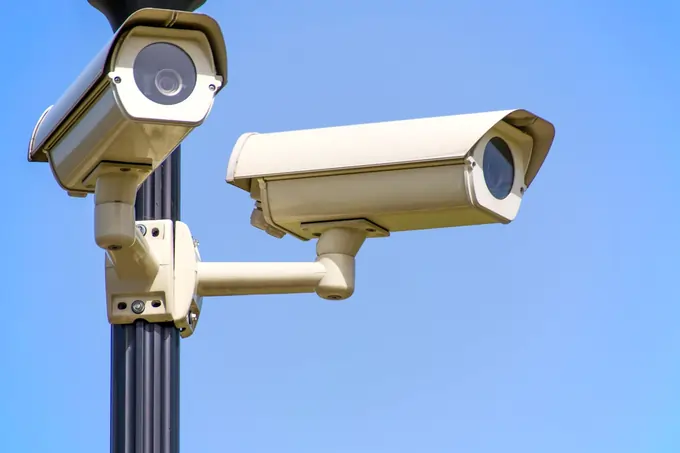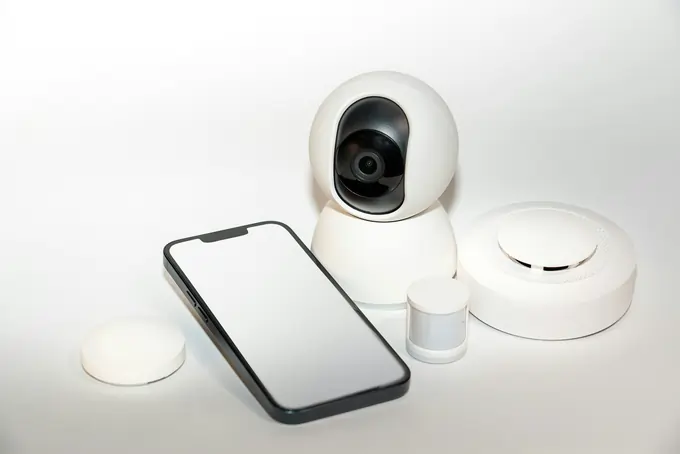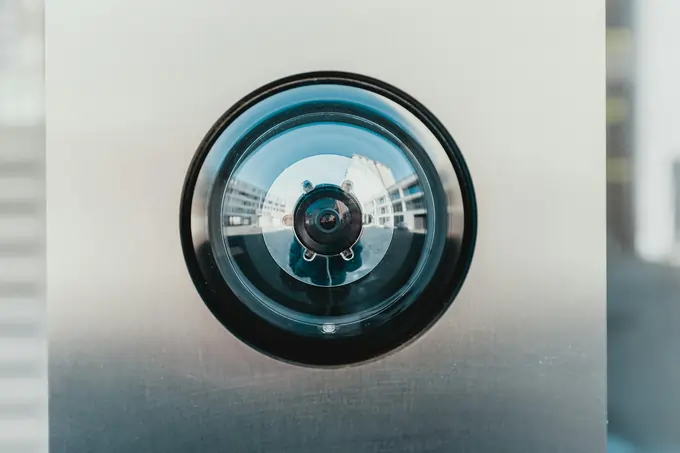Are you worried about your home’s safety?
DIY home security projects can give you peace of mind without breaking the bank.
In this article, we’ll explore the best do-it-yourself home security ideas for 2024.
You’ll learn how to protect your home and loved ones using affordable, easy-to-install solutions.
But first, let’s understand why DIY security matters…
What Are the Essential Components of DIY Home Security Projects?
When diving into DIY home security projects, there are a few must-haves. First, get some solid cameras and sensors. Next, use a reliable control system or integrate with your smart home. Lastly, don’t forget good Internet—after all, you gotta have that home security connected to your home and phone!
Understanding Home Security Systems
Home security is more than just locks on doors.
It’s a comprehensive approach to keeping your family and belongings safe.
DIY systems offer flexibility and control over your home’s protection.
They typically include cameras, sensors, and alarms working together.
But how do you choose the right components?
Let’s break it down…
Choosing a DIY Security Camera
Cameras are the eyes of your security system.
They deter intruders and provide evidence if needed.
Wireless security cameras are popular for DIY projects.
They’re easy to install and can be accessed from your smartphone.
But what features should you look for?
We’ll cover that soon, but first…
The Importance of Motion Sensors in DIY Security
Motion sensors are the silent guardians of your home.
They detect movement and trigger alerts.
Security sensors can be placed near doors, windows, and hallways.
They’re essential for a complete DIY security setup.
But how do they work with other components?
Let’s find out in the next section…
How Do I Install a DIY Home Security System?

Thinking of setting up your own DIY home security system? It’s a breeze! First, pick your gear like cameras and sensors. Next, set up the control hub, which connects everything together. You can even add smart home integrations to sync with your lights and locks. Boom, home security at your fingertips!
Step-by-Step Guide to DIY Installation
Installing your own security system might seem daunting.
But with the right guidance, it’s simpler than you think.
Here’s a basic outline:
- Plan your system layout
- Gather necessary tools
- Install the control panel
- Place sensors and cameras
- Set up monitoring and alerts
Sounds easy, right?
But there’s more to consider…
Tips for Installing Wireless Home Security Systems
Wireless security systems are the go-to choice for DIY enthusiasts.
They’re flexible and don’t require drilling holes in walls.
Here are some tips for a smooth installation:
- Choose a central location for the hub
- Test signal strength before final placement
- Use strong, unique passwords for all devices
- Update firmware regularly
But what about common pitfalls?
Common Mistakes to Avoid
Even seasoned DIYers can make mistakes.
Here are some to watch out for:
- Overlooking battery life in wireless devices
- Placing cameras in easily accessible locations
- Forgetting to register your system with local authorities
- Neglecting to test the system regularly
Now that you know the basics, let’s explore the top systems for 2024…
What Are the Best DIY Home Security Systems of 2024?
Alright, folks! So, let’s chat about the best DIY home security systems of 2024. These systems are pretty rad with their smart home integrations. They make home security a breeze, right? The top picks are super easy to install and offer home connectivity that you can totally control through your phone. Stay safe and smart!
List of the Best DIY Home Security Systems

The market is flooded with options.
But which ones stand out?
Here are our top picks for 2024:
- SimpliSafe
- Ring Alarm
- Abode
- Cove
- Frontpoint
Each system has its strengths.
But how do they compare?
Reviewing Top-Rated Home Security Systems
Let’s take a closer look at these systems:
SimpliSafe offers easy installation and no long-term contracts.
Ring Alarm integrates well with other smart home devices.
Abode provides flexible monitoring options.
Cove boasts quick response times and user-friendly interfaces.
Frontpoint offers high-end features for tech-savvy users.
But which one is right for you?
Comparing DIY Home Security Options
Choosing the right system depends on your needs and budget.
Here’s a quick comparison:
- System cost: Ranges from $200 to $600 for basic setups
- Monthly fees: Optional, typically $10 to $30 for professional monitoring
- Installation: All offer self-setup options
- Smart home integration: Varies by system, with Ring and Abode leading the pack
But what about integrating with your existing smart devices?
Can I Integrate My DIY Home Security with Smart Devices?
Absolutely, you can totally integrate your DIY home security with smart home integrations! Combining systems like the cove system with other smart home gadgets can offer super convenience and better security. But make sure it doesn’t weaken your home security. The systems we tested revealed cool features you could add to your home today. Research well so you don’t lose your security with mismatched devices!
Using Alexa and Google Home for Smart Security
Voice control adds convenience to your security system.
Both Alexa and Google Home can integrate with many DIY security systems.
You can arm your system, check camera feeds, or control smart locks with voice commands.
But which systems work best with smart assistants?
We’ll explore that next…
Best Smart Home Products for Security Integration

Smart home integration enhances your security setup.
Here are some top products to consider:
- Smart door locks (August, Yale)
- Video doorbells (Ring, Nest)
- Smart lighting (Philips Hue, Sengled)
- Smart smoke detectors (Nest Protect, First Alert)
These devices work together to create a comprehensive security network.
But how easy are they to install?
Easy-to-Install Smart Home Devices
Many smart home security devices are designed for DIY installation.
Wireless security systems often come with peel-and-stick sensors.
Smart locks can replace existing deadbolts with basic tools.
Video doorbells typically require only a screwdriver and Wi-Fi connection.
But what about outdoor security?
Let’s look at the role of cameras…
How Can DIY Home Security Cameras Enhance Safety?
Ever thought about getting a security upgrade? DIY wireless cameras can transform your space! Thanks to smart home integrations, you’re in control. Forget about losing access to your home; the best wireless security systems are super manageable with a home app.
When it comes to home security tips, nothing beats DIY. You can mix and match security components and create a robust self setup system. The ease of security systems like Cove is unbeatable, and home security systems are easy to get. Grab a security bundle and you’re set!
There are loads of benefits of diy setups. They offer awesome flexibility over wired systems or a traditional adt system. And with options like hardwired systems and home secure configurations, you can find what fits best. Start with a self setup system and help make your home safe today.
Think about those creative ideas for security – even a simple diy wireless camera can make a difference. Security systems are easy to install and enhance your peace of mind. So, buy a diy setup and keep your home secure without any hassle!
Advantages of Outdoor Security Cameras
Outdoor cameras are your first line of defense.
They deter potential intruders and capture evidence if needed.
Wireless home security cameras offer flexibility in placement.
Many have night vision and two-way audio for added protection.
But what about indoor cameras?
Wireless Home Security Cameras: A Practical Choice
Indoor cameras keep an eye on what matters most.
They can monitor children, pets, or valuables.
Wireless security options make installation a breeze.
Many offer cloud storage for footage, ensuring you never miss an event.
But how do you choose the right camera?
Choosing the Right Camera for Your Needs

Consider these factors when selecting a camera:
- Resolution (1080p is standard, 4K for more detail)
- Field of view (wider angles cover more area)
- Night vision capabilities
- Two-way audio for communication
- Storage options (local vs. cloud)
Now that we’ve covered cameras, let’s explore other DIY security ideas…
What Are Simple DIY Security Ideas to Protect Your Home?
Looking to make your home safe without breaking the bank? Consider some diy home security ideas. By choosing a diy security system, you can enjoy many features traditionally found in professionally installed systems at a fraction of the cost. DIY options like home automation let you control indoor and outdoor security cameras, keeping your home safe from anywhere.
When installing security devices, make sure to cover key areas inside your home and outside. Home monitoring systems are often a great addition, allowing you to keep an eye on things. If high-end security like the Frontpoint system seems too much, worry not! DIY systems often come with smart home integrations to make your home even smarter.
Whether it’s through home automation or just some basic security measures, diy home security ideas give you many ways to enhance your home’s security. Choose the best diy security systems that fit your needs and budget, and you’ll soon find your home doesn’t feel vulnerable anymore. Going the diy route means more control and less expense while keeping your home safe.
DIY Alarm System Setup
A basic alarm system can be a powerful deterrent.
You can create one using:
- Door and window sensors
- Motion detectors
- Loud sirens or alarms
- A central control panel
Many DIY security system kits include these components.
But what about monitoring your front door?
Installing a Video Doorbell
Video doorbells are a popular DIY home security addition.
They let you see and speak to visitors from anywhere.
Installation typically involves:
- Removing your old doorbell
- Connecting wires to the new device
- Mounting the doorbell
- Setting up the app
But what if you want more comprehensive protection?
Enhancing Home Protection with Motion Sensors
Motion sensors are versatile security tools.
They can:
- Trigger lights to deter intruders
- Send alerts to your phone
- Activate cameras or alarms
Placing them strategically around your home creates a virtual security net.
Now you’re equipped with knowledge to secure your home.
Remember, the best security system is one that fits your lifestyle and budget.
Start small, and build your DIY security system over time.
Your peace of mind is worth the effort.
Ready to take the first step towards a safer home?
Choose one project from this article and get started today.
Your future self will thank you for it.


